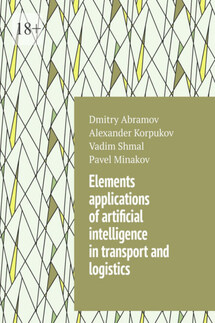Разработка Android-приложений с Augmented Reality - страница 13
*/
protected synchronized void buildGoogleApiClient () {
mGoogleApiClient = new GoogleApiClient. Builder (this)
.addConnectionCallbacks (this)
.addOnConnectionFailedListener (this)
.addApi (LocationServices. API)
.build ();
createLocationRequest ();
}
protected void createLocationRequest () {
mLocationRequest = LocationRequest.create ();
// Sets the desired interval for active location updates. This interval is
// inexact. You may not receive updates at all if no location sources are available, or
// you may receive them slower than requested. You may also receive updates faster than
// requested if other applications are requesting location at a faster interval.
mLocationRequest.setInterval (10000);
// Sets the fastest rate for active location updates. This interval is exact, and your
// application will never receive updates faster than this value.
mLocationRequest.setFastestInterval (5000);
mLocationRequest.setPriority(LocationRequest.PRIORITY_HIGH_ACCURACY);
}
@Override
public void onStart () {
super. onStart ();
mGoogleApiClient.connect ();
}
@Override
public void onStop () {
super. onStop ();
mGoogleApiClient. disconnect ();
}
@Override
public void onResume () {
super. onResume ();
// Within {@code onPause ()}, we pause location updates, but leave the
// connection to GoogleApiClient intact. Here, we resume receiving
// location updates if the user has requested them.
if (mGoogleApiClient.isConnected ()) {
startLocationUpdates ();
}
}
@Override
protected void onPause () {
super. onPause ();
// Stop location updates to save battery, but don’t disconnect the GoogleApiClient object.
if (mGoogleApiClient.isConnected ()) {
stopLocationUpdates ();
}
}
protected void startLocationUpdates () {
if (ActivityCompat.checkSelfPermission (this, android.Manifest.permission.ACCESS_FINE_LOCATION)!= PackageManager.PERMISSION_GRANTED && ActivityCompat.checkSelfPermission (this, android.Manifest.permission.ACCESS_COARSE_LOCATION)!= PackageManager.PERMISSION_GRANTED) {
return;
}
LocationServices.FusedLocationApi.requestLocationUpdates (
mGoogleApiClient, mLocationRequest, this);
}
/**
* Removes location updates from the FusedLocationApi.
*/
protected void stopLocationUpdates () {
// It is a good practice to remove location requests when the activity is in a paused or
// stopped state. Doing so helps battery performance and is especially
// recommended in applications that request frequent location updates.
// The final argument to {@code requestLocationUpdates ()} is a LocationListener
// (http://developer.android.com/reference/com/google/android/gms/location/LocationListener.html).
LocationServices.FusedLocationApi.removeLocationUpdates (mGoogleApiClient, this);
}
@Override
public boolean onMarkerClick (Marker marker) {
// To get the GeoObject that owns the marker we use the following
// method:
GeoObject geoObject = mGoogleMapPlugin.getGeoObjectOwner (marker);
if (geoObject!= null) {
Toast.makeText (this, «Click on a marker owned by a GeoOject with the name: " + geoObject.getName (),
Toast.LENGTH_SHORT).show ();
}
return false;
}
@Override
public void onMapReady (GoogleMap googleMap) {
mMap=googleMap;
// We create the world and fill the world
mWorld = CustomWorldHelper.generateObjects (this, mCurrentLocation);
// As we want to use GoogleMaps, we are going to create the plugin and
// attach it to the World
mGoogleMapPlugin = new GoogleMapWorldPlugin (this);









